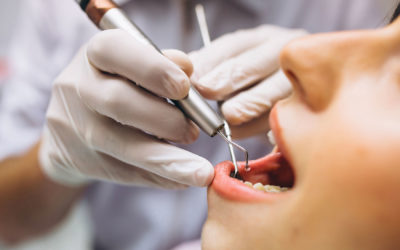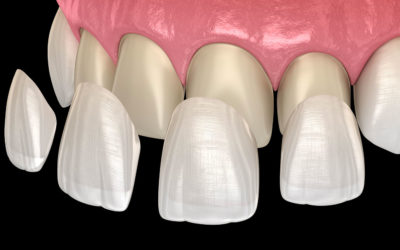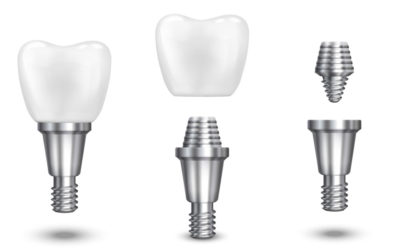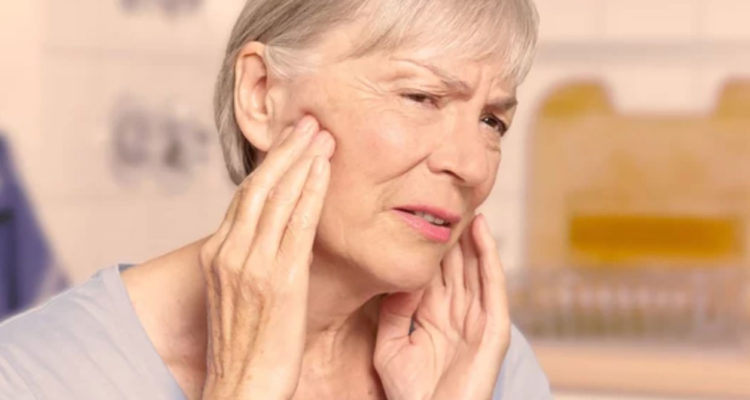
Cracked jaw: what can be done about it?
Do you regularly feel discomfort when you eat, do you have a cracking sensation in your jaw? Have you ever wondered about the origin of this clicking in your jaw and why this pain is so pronounced?
This probably comes from the temporomandibular joint (TMJ). This dysfunction is a fairly common disease that affects many people.
What is TMJ disorder? Is it a health problem? What causes it?
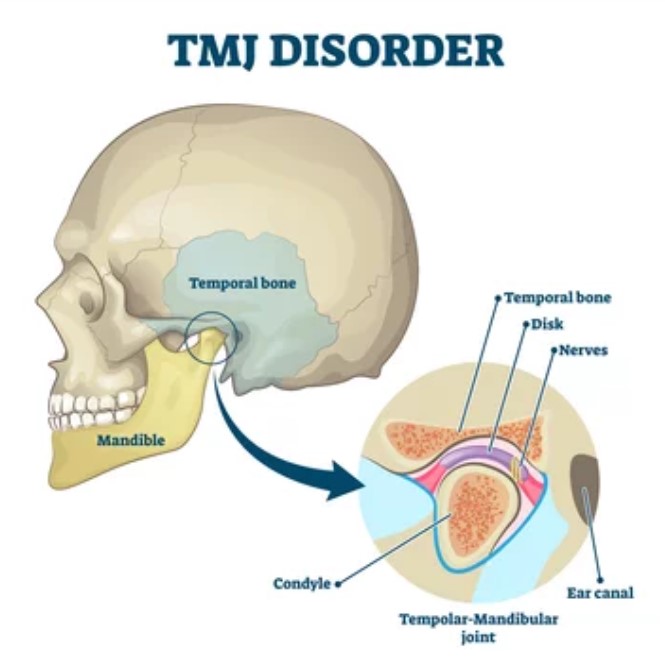
TMJ disorder: what is it?
TMJ disorder is defined as a series of problems related to your jaw joint, and more specifically the mechanism of this joint.
The temporomandibular joint connects the skull to the jaw on both sides. A TMJ disorder can cause a lot of pain and other life-altering symptoms.
The joints allow your jaw to close, open and move sideways. When either TMJ is not properly aligned, muscles and nerves become irritated.
Occlusion refers to the way the upper and lower teeth fit together. Misalignment of the TMJ can disrupt the bite. When your jaw muscles are aligned correctly, your jaw is able to function and rest.
However, when the nerves and muscles in your jaw are not aligned, your jaw can develop a dysfunction of this joint.
Possible causes of TMJ pain
Nowadays, most problems with protruding or cracking jaws are taken more seriously than before. The treatment is quicker and the diagnosis more precise.
These symptoms occur when the chewing muscles and joints do not work in sync. The joints are relatively complex and their dysfunction can cause much more serious problems.
There are many reasons for TMJ disorders. Here are some examples:
- Misalignment of the teeth and jaw
- Arthritis
- Injury to the jaw
- Injury to the teeth
- Poor posture
- Stress
- Chewing gum all the time
- Teeth grinding or jaw clenching
It can also start with poor posture in the upper back and neck and cause many more problems. Stress can also lead to clenching of the jaw and grinding of the teeth.
Your jaw may crack or snap without being painful. This may happen when you eat a meal. At first you may not notice it, until in some cases your jaw cracks more and more often.
The impact of TMJ disorders on posture
As the jaw is attached to the skull via the TMJs, a bad balance of the jaw can also cause an imbalance in the whole postural system. This can also be a source of pain radiating to the head, neck or shoulders.
Indeed, posture is influenced by 6 sensors which are the feet, the skin, the musculoskeletal proprioceptors, the inner ear, the mandible and the eyes. These 6 sensors all interact with each other and adapt if one of them is not functioning properly. In most people, a problem with the position of the teeth or jaw does not cause any pain or symptoms.
But in some cases, a decompensation will occur, which can have different causes (physical or emotional shock, long or ill-adapted dental treatment).
Painful symptoms will then appear, sometimes at a distance from the jaw, and patients often go to see various specialists (ENT, neurologists, etc.) who find no problems with the examinations.
Mandibular repositioning and occlusal treatment (orthodontic or prosthetic) can then restore the mandible and TMJs to physiological function. This will allow the pain to disappear.
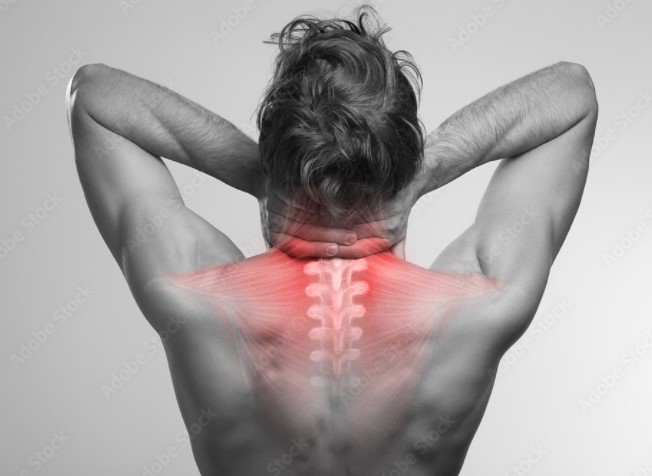
Jaw dysfunction: what are the different treatment options?
Nowadays, there are many treatments available to relieve and then cure TMJ disorders.
Medicinal treatments for TMJ
If over-the-counter painkillers may not be enough to relieve TMJ pain, your dentist may prescribe stronger painkillers, such as painkillers and anti-inflammatories, on prescription for a limited period of time.
Tricyclic antidepressants, such as amitriptyline, are mainly used for depression, but in small doses they are sometimes used for pain relief, bruxism and insomnia.
Muscle relaxants are also used for a few days or weeks to relieve pain caused by temporomandibular joint disorders created by muscle spasms.
Occlusal device treatments
Initially, your practitioner is usually not able to say whether the pain is mainly related to muscle spasms or joint disorders unless you present a perfectly normal joint examination (pure muscle stage) or if, on the contrary, a joint problem is obvious in case of severe osteoarthritis for example.
We will therefore generally start (except in special cases) a treatment with occlusal devices. This treatment is capable of relieving pain of muscular origin and regulating minor and still reversible joint disorders. This treatment, which should last at least 2 to 3 months, allows us to distinguish between the two origins of the pain (muscular or articular).
Nine times out of ten, this occlusal device treatment is effective and solves your problem because the pain is usually related to muscle spasms and minor joint disorders following the muscle spasms. Even if after treatment and after the pain has disappeared, there is still a clicking sound, which indicates a small joint disorder, this is tolerated as it is clearly not the cause of your pain.
The result can then be stabilised by treatment of the dental joint anomalies to position the joint and the lower jaw in the most stable and least traumatic position possible. This type of treatment can be orthodontics, to realign the teeth correctly, or prosthetic treatment if it is necessary to change the shape of the teeth, for example in case of wear.
Non-drug treatments
Various non-medicinal therapies are available for TMJ disorders.
Physiotherapy treatments will stretch and strengthen the muscular system and thus support the defective joints. To support these exercises, therapy treatments may include ultrasound, moist heat and ice.
Osteopathy will help the body to find its postural balance, by working on the skull and the mandible. But also at a distance on other organs and receptors that may be involved in the pain.
Stress is an important factor in triggering pain. Reducing stress through relaxation or yoga exercises, acupuncture or even psychotherapy can help relieve pain. This helps you to know the factors and behaviours that can aggravate pain, so that you can avoid them.
Surgical treatments
Surgical treatment is always exceptional. It must be the subject of a precise diagnosis and a rigorous evaluation. The expected benefits must be weighed against the risks involved.
Arthrocentesis is a minimally invasive procedure in which small needles are inserted into the joint. Fluid is then drawn through the joint to remove debris and inflammatory products.
In some cases, arthroscopic surgery can also be effective. A small thin tube (cannula) is placed in the joint space. An arthroscope is inserted and small surgical instruments are used for the surgery.
Modified Condylectomy indirectly addresses the TMJ through mandibular surgery, but not the joint itself. It can be useful for pain management and in cases of blockage.
If your jaw pain does not go away with these treatments, the cause may be a structural problem. Your doctor or dentist may suggest open joint surgery to repair or replace the joint.
However, joint surgery carries many risks. The choice of this procedure should be carefully considered. Take the time to discuss the pros and cons with your doctor.
Treatment by injection
In some people, corticosteroid injections into the joint may be helpful. Injection of Botox or other toxins into the jaw muscles can relieve the pain associated with TMJ disorders.
Botox is increasingly used, although it is known for its ability to treat migraines. Botox can also relieve the muscle tension that causes TMJ pain.
However, Botox is not recommended for pregnant or breastfeeding women, or for those with neurological disorders. Also, if the TMJ is already damaged, you may need more than Botox injections to correct the problem.
Treatment of TMJ disorder at the Champel Dental Centre
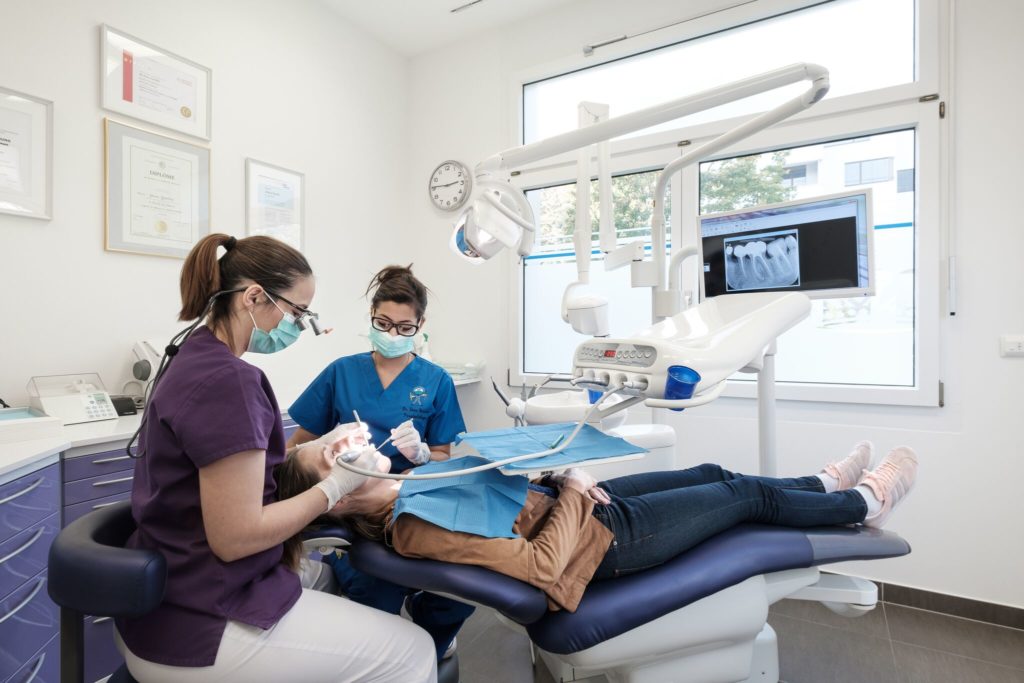
The safest way to treat your jaw pain is to visit your nearest dental practice. You can also contact your dentist so that he or she can assess and diagnose your problem.
The Centre Dentaire Champel in Geneva is composed of a team of qualified dentists. State of the art equipment to offer you high quality dental care.
The addition of a new piece of equipment reinforces the expertise of the Centre Dentaire Champel in the treatment of jaw disorders. Thanks to a solution specially designed for use in the dental surgery, the dentists at the Centre Dentaire Champel obtain a 4D (dynamic 3D) visual of the patient's masticatory movements.
The MODJAW Tech in Motion technology is a highly advanced medical device. It provides access to a unique knowledge of the dentition and occlusion of the patients being treated. A tool to pave the way for personalised and optimal dentistry.
In the event of a severe toothache, accident or TMJ disorder, our team is at your disposal. We will intervene to alleviate your pain and to begin emergency first aid.
We welcome you by appointment every day of the week.
Discover also the Centre Dentaire Lancy and the Centre Dentaire Chêne-Bourg



